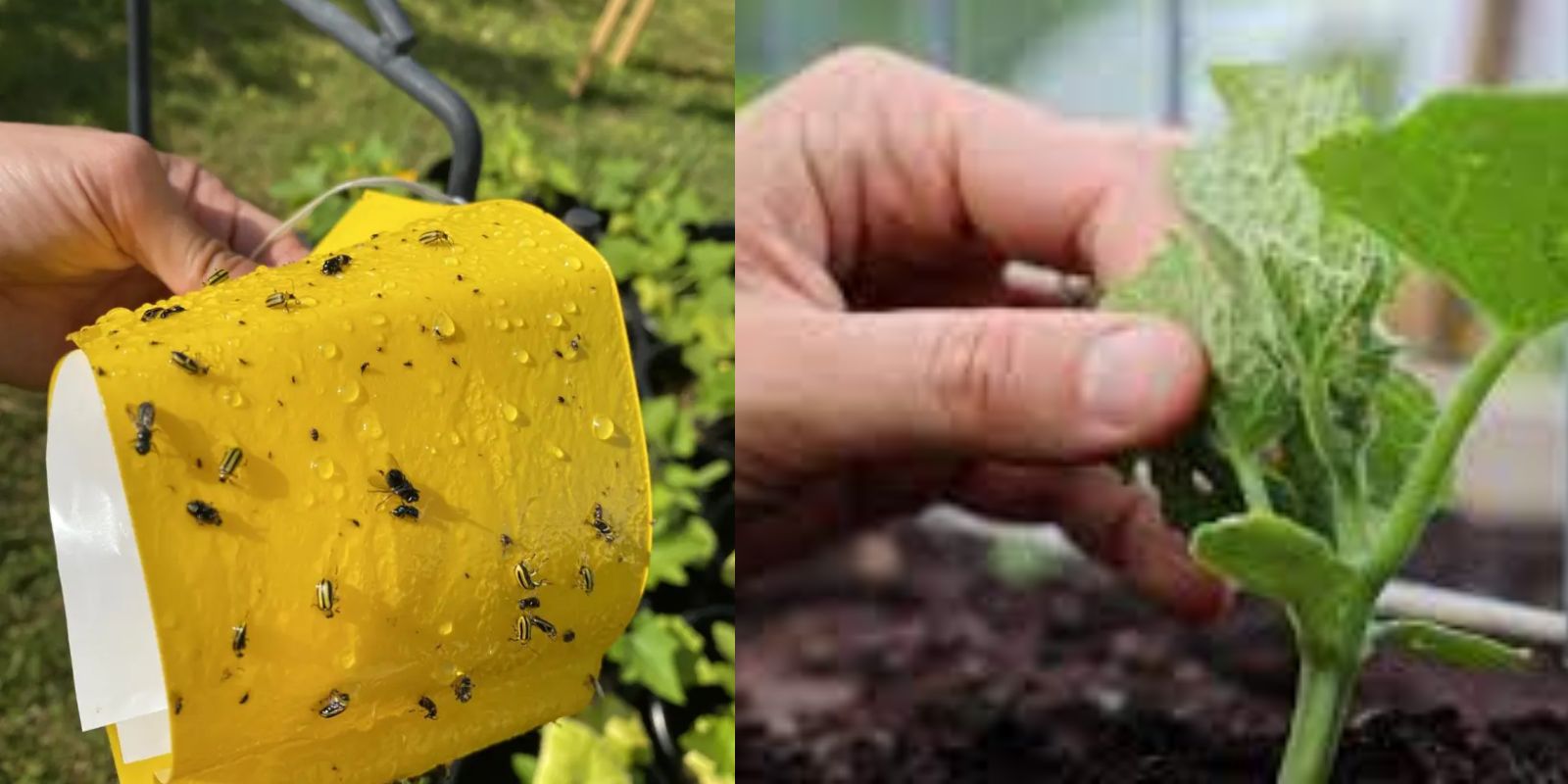Cucumber beetles are a gardener’s nightmare, especially if you grow cucumbers, squash, melons, or other related plants. These pests can quickly devastate your crops, feeding on leaves, stems, and flowers and transmitting diseases like bacterial wilt and cucumber mosaic virus. In this article, we will explore various effective strategies to manage and eliminate cucumber beetles from your garden. With the right approach, you can protect your plants and ensure a healthy, bountiful harvest.
Understanding Cucumber Beetles
Types of Cucumber Beetles
There are two main types of cucumber beetles that gardeners encounter:
- Striped Cucumber Beetle (Acalymma vittatum): This beetle has yellowish-green bodies with three black stripes running lengthwise down its back. It typically emerges in the spring and is particularly damaging to seedlings.
- Spotted Cucumber Beetle (Diabrotica undecimpunctata): This variety is greenish-yellow with twelve black spots on its back. Like its striped counterpart, it can cause significant damage to plants, especially during the flowering stage.
Life Cycle
Cucumber beetles undergo a complete metamorphosis, progressing through four life stages: egg, larva, pupa, and adult. The adults overwinter in leaf litter and emerge in early spring, ready to feed on young plants. They lay eggs in the soil near the roots of host plants, and the larvae feed on the roots, further stressing the plants.
Damage Caused
Cucumber beetles feed on leaves, causing skeletonization and reducing the plant’s ability to photosynthesize. This feeding can weaken plants, making them more susceptible to diseases. Additionally, the diseases transmitted by these beetles can lead to significant crop loss.
Effective Strategies for Managing Cucumber Beetles
Here are several effective strategies to control cucumber beetles in your garden:
1. Handpicking
One of the simplest and most effective methods for controlling cucumber beetles is handpicking. Regularly inspect your plants, especially in the early morning when the beetles are less active. Use gloves to avoid contact with the pests, and drop them into a bucket of soapy water to eliminate them.
2. Row Covers
Using lightweight row covers is an excellent way to prevent cucumber beetles from accessing your plants. These covers create a physical barrier that keeps pests out while allowing sunlight and rain to reach your plants. Make sure to remove the covers when your plants flower to allow pollinators access. Just remember to check for any beetles hiding under the cover before removing it.
3. Companion Planting
Companion planting is a natural method to deter cucumber beetles and attract beneficial insects. Some effective companion plants include:
- Marigolds: Their strong scent can deter cucumber beetles while attracting predatory insects like ladybugs that feed on pests.
- Radishes: Planting radishes nearby can distract beetles from your cucumbers, as they prefer feeding on radish leaves.
- Nasturtiums: These flowers can act as a trap crop, drawing cucumber beetles away from your more valuable plants.
4. Insecticidal Soap and Neem Oil
Insecticidal soap and neem oil are natural pesticides that can effectively control cucumber beetle populations.
- Insecticidal Soap: This product works by suffocating soft-bodied insects. Spray it directly on cucumber beetles and their larvae, following the manufacturer’s instructions for application rates.
- Neem Oil: Derived from the seeds of the neem tree, neem oil disrupts the feeding and reproductive cycles of insects. It can be sprayed on plants to deter cucumber beetles and other pests. Ensure you apply neem oil in the evening or early morning to avoid harming beneficial insects.
5. Crop Rotation
Crop rotation is an effective method for disrupting the life cycle of cucumber beetles. By changing the location of your cucumber plants each year, you can prevent beetles from returning to the same area. This method not only helps control cucumber beetles but also improves soil health and reduces the risk of soil-borne diseases.
6. Maintaining Healthy Soil
Healthy soil supports strong plants that can better withstand pest pressures. Incorporate organic matter, such as compost or well-rotted manure, to improve soil structure, fertility, and moisture retention. Well-nourished plants are more resilient and less susceptible to damage from pests like cucumber beetles.
7. Attract Beneficial Insects
Encouraging beneficial insects to visit your garden can help control cucumber beetle populations. Ladybugs, lacewings, and parasitic wasps are natural predators of cucumber beetles and their larvae. Plant a variety of flowers that attract these beneficial insects, such as dill, fennel, and yarrow, to create a diverse ecosystem in your garden.
8. Traps
Setting up traps can help monitor and reduce cucumber beetle populations. Consider using sticky traps or homemade traps with a bait of vinegar or a mixture of soap and water to attract and catch beetles. Place traps near your cucumber plants and regularly check and dispose of captured beetles.
9. Timing of Planting
Timing your planting can also help minimize cucumber beetle damage. By planting cucumbers later in the season, you can avoid peak beetle populations. Additionally, planting resistant varieties can help protect your crops from beetles and diseases.
10. Chemical Controls
If cucumber beetle populations become overwhelming, you may need to consider chemical controls. Look for targeted insecticides that are safe for use in vegetable gardens and follow the manufacturer’s instructions carefully. Always prioritize organic options and apply chemicals as a last resort to protect beneficial insects and the environment.
Conclusion
Cucumber beetles can pose a significant threat to your vegetable garden, but with proactive measures, you can manage and control these pests effectively. By employing strategies such as handpicking, row covers, companion planting, and using natural pesticides, you can protect your crops and ensure a healthy harvest. Maintaining a diverse ecosystem and healthy soil will further bolster your plants’ resilience against cucumber beetles and other pests.
Don’t let cucumber beetles deter you from gardening! By implementing these strategies and staying vigilant, you can enjoy a thriving vegetable garden year after year.
Call to Action
Share your experiences in managing cucumber beetles or any other garden pests! Let’s grow our knowledge together and cultivate a beautiful, bountiful garden! 🌱✨ #CucumberBeetles #OrganicGardening #HealthyHarvest #GardenTips #SustainableGardening

